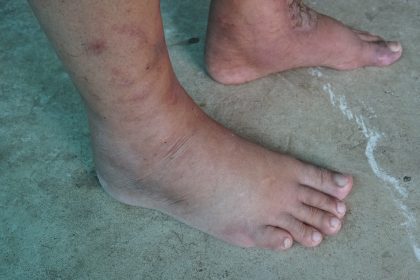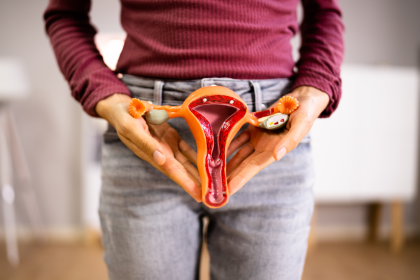Those bubbles in your toilet bowl might be more than a quirky bathroom observation. Persistent foamy urine often signals kidney damage, protein loss or chronic disease developing silently in your body. While occasional foam means nothing, recurring froth demands attention – it could be your kidneys’ cry for help before serious damage becomes irreversible.
Understanding when foam means trouble
Normal urine creates minimal bubbles that disappear quickly. Foamy urine looks distinctly different – think beer foam or soap suds that linger in the bowl. The difference between harmless and harmful lies in frequency and persistence.
Signs foam requires medical attention:
- Bubbles persist after flushing
- Foam appears daily or multiple times weekly
- Accompanied by swelling in face, legs or abdomen
- Occurs with unusual fatigue or weakness
- Changes in urination frequency or volume
Single episodes from dehydration or forceful urination mean nothing. But when foam becomes your new normal, your kidneys are likely leaking something they should retain.
Protein in your urine signals kidney damage
Healthy kidneys act as sophisticated filters, keeping essential proteins in your bloodstream while removing waste. When kidneys malfunction, proteins – especially albumin – escape into urine, creating persistent foam. This condition, called proteinuria, often represents the first detectable sign of chronic kidney disease (CKD).
The protein-foam connection reveals:
- Kidney filters have become damaged or inflamed
- Essential proteins are being lost instead of retained
- Chronic kidney disease may be developing
- Early intervention could prevent kidney failure
- Other organs may also be affected
Left unchecked, this protein loss progresses from minor leakage to massive kidney failure requiring dialysis or transplant. Early detection through something as simple as noticing foamy pee can literally save your kidneys.
Major diseases announce themselves through foam
Multiple serious conditions first reveal themselves through foamy urine. Your bathroom observations might detect these diseases before other symptoms appear.
Common culprits behind persistent foam:
Diabetes – High blood sugar damages kidney filters over time, allowing protein leakage that creates foam.
Hypertension – Uncontrolled blood pressure physically damages delicate kidney structures, causing protein loss.
Autoimmune diseases – Lupus and other conditions trigger kidney inflammation, disrupting normal filtering.
Kidney infections – Bacterial invasions compromise kidney function, often causing foamy, cloudy urine.
Glomerulonephritis – Direct inflammation of kidney filters leads to significant protein leakage.
These conditions share one trait – they damage kidneys silently until foam appears as an early warning.
Simple causes require simple solutions
Not all foam indicates disaster. Benign causes create temporary foam that resolves quickly with basic interventions.
Harmless foam triggers include:
- Dehydration concentrating urine components
- High-protein diets overwhelming kidney capacity
- Vigorous exercise causing temporary protein spillage
- Rapid urination creating mechanical bubbles
- Toilet cleaning products reacting with urine
These causes produce occasional foam that disappears with hydration or dietary adjustments. Persistent foam despite addressing these factors suggests deeper problems requiring medical evaluation.
When to stop ignoring bathroom observations
Many people dismiss urinary changes from embarrassment or fear. This denial costs kidneys precious time. Early kidney disease responds well to treatment; advanced disease becomes irreversible.
Seek immediate medical evaluation for:
- Foam persisting over multiple days
- Swelling anywhere in your body
- Unexplained fatigue or weakness
- Changes in urination patterns
- Family history of kidney disease
Simple urine tests detect protein levels within minutes. Blood tests measuring creatinine and glomerular filtration rate (GFR) assess kidney function precisely. These non-invasive tests could reveal problems while treatment remains highly effective.
Protecting your kidneys starts today
Whether your foam signals trouble or serves as a wake-up call, kidney protection should become priority. These organs filter 200 quarts of blood daily – they deserve proper care.
Essential kidney protection strategies:
- Maintain consistent hydration with water
- Control blood pressure through diet and exercise
- Monitor blood sugar if diabetic or pre-diabetic
- Limit over-the-counter painkiller use
- Schedule annual kidney function tests if at risk
Small daily choices compound into kidney protection or destruction over time.
The emotional cost of ignoring symptoms
Discovering kidney disease through worsening symptoms rather than early foam creates enormous emotional burden. Patients frequently express regret about ignoring early signs, wishing they’d investigated bathroom changes sooner.
Advanced kidney disease brings:
- Dialysis treatments multiple times weekly
- Transplant waiting lists and surgery risks
- Dietary restrictions and lifestyle limitations
- Financial strain from medical costs
- Emotional toll on families
Investigating foam today prevents these devastating outcomes tomorrow.
Your body communicates through subtle signs
Foamy pee represents your body’s attempt at early communication. These bubbles might save you from dialysis, transplant or premature death. While investigating bathroom observations feels uncomfortable, ignoring them proves far worse.
Your kidneys work silently, filtering toxins and maintaining chemical balance every second. When they struggle, foam appears as their distress signal. Responding to this signal with medical evaluation and lifestyle changes could preserve kidney function for decades.
Don’t dismiss persistent foam as meaningless. Your kidneys can’t speak loudly – they communicate through subtle changes like bubbles in your toilet. Listen to these whispers before they become screams. Schedule that medical appointment, request those tests, make those lifestyle changes.
Small bathroom observations can reveal enormous health truths. That foam might be nothing – or it might be everything. Only medical evaluation determines which. Your kidneys, your health and your future depend on taking these signs seriously. The bubbles won’t go away by themselves, but with proper attention, their underlying cause might.















